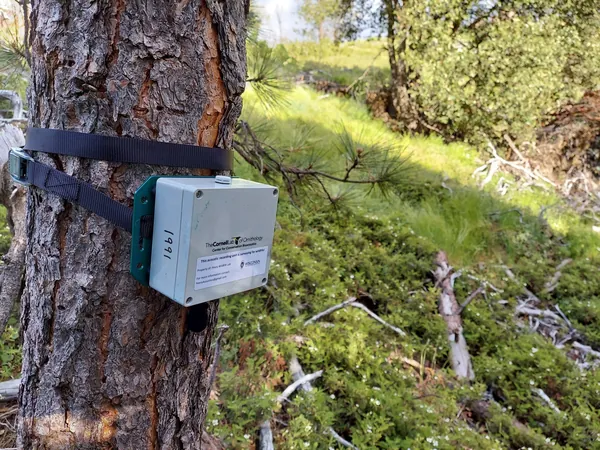
Unlocking Conservation: How Monitoring Birds Can Save Entire Ecosystems!
2025-05-23
Author: Wei
A Groundbreaking Study Unveils the Secrets of Bird Monitoring
Researchers from the Cornell Lab of Ornithology have made a game-changing discovery at the K. Lisa Yang Center for Conservation Bioacoustics. Their study reveals that keeping tabs on specific bird species not only aids their survival but also helps protect other wildlife within the same regions!
The Power of the Umbrella Species Concept
Published in the journal Conservation Biology, this groundbreaking research analyzed a staggering 892,000 hours of bird sounds recorded across California's Sierra Nevada. The team set out to test the long-held belief that monitoring a select few bird species, known as umbrella species, can safeguard a broader ecosystem. Lead author Kristin Brunk stated, “We've always assumed that one species could provide insights into many others, but this theory has rarely been tested on such a large scale.”
High-Tech Tools Make Conservation Data-Driven
The researchers employed advanced recording devices and artificial intelligence to investigate six key bird species, including the California spotted owl and black-backed woodpecker, alongside 63 other bird species in an area as vast as Vermont. These surrogate species were selected due to their unique habitat requirements, which also benefit various other birds.
Why Does This Matter?
The California spotted owl, for instance, signifies the health of mature forests—habitats that many other birds, like the golden-crowned kinglet and hermit thrush, depend upon. Following the umbrella species concept, guarding the owl’s habitat would consequently protect these other species as well!
Innovation Leading to New Insights
Thanks to the Yang Center’s SwiftOne recording devices, researchers captured audio at 1,651 sites day and night. With the help of BirdNET, an innovative machine learning tool, they identified species from countless recordings. Connor Wood, co-author of the study, remarked, “We’re entering a new era of conservation science. These technologies enable us to gather and analyze data on an unprecedented scale.”
Staggering Findings: A Game-Changer for Conservation Strategies
The results were illuminating—an astounding 95% of other forest birds demonstrated positive relationships with at least one of the six selected surrogate species. This means that enhancing habitats for these key birds could help ensure the survival of many more!
A Call for Caution in Conservation
Brunk emphasized the need for careful consideration in conservation efforts: “What works in one locale might not apply universally. Species' habitat needs vary across their ranges, which must be accounted for when selecting surrogate species.” The effectiveness of selected birds can even change with geography, shedding light on the complexities of conservation strategies.
Conclusion: Shaping the Future of Conservation Efforts
The study underscores the importance of choosing the right surrogate species wisely. As Wood puts it, “An ideal surrogate species should be well connected to specific environmental conditions—offering a conservation umbrella for a multitude of other species.” With these new insights, the future of wildlife preservation looks brighter than ever!




 Brasil (PT)
Brasil (PT)
 Canada (EN)
Canada (EN)
 Chile (ES)
Chile (ES)
 Česko (CS)
Česko (CS)
 대한민국 (KO)
대한민국 (KO)
 España (ES)
España (ES)
 France (FR)
France (FR)
 Hong Kong (EN)
Hong Kong (EN)
 Italia (IT)
Italia (IT)
 日本 (JA)
日本 (JA)
 Magyarország (HU)
Magyarország (HU)
 Norge (NO)
Norge (NO)
 Polska (PL)
Polska (PL)
 Schweiz (DE)
Schweiz (DE)
 Singapore (EN)
Singapore (EN)
 Sverige (SV)
Sverige (SV)
 Suomi (FI)
Suomi (FI)
 Türkiye (TR)
Türkiye (TR)
 الإمارات العربية المتحدة (AR)
الإمارات العربية المتحدة (AR)